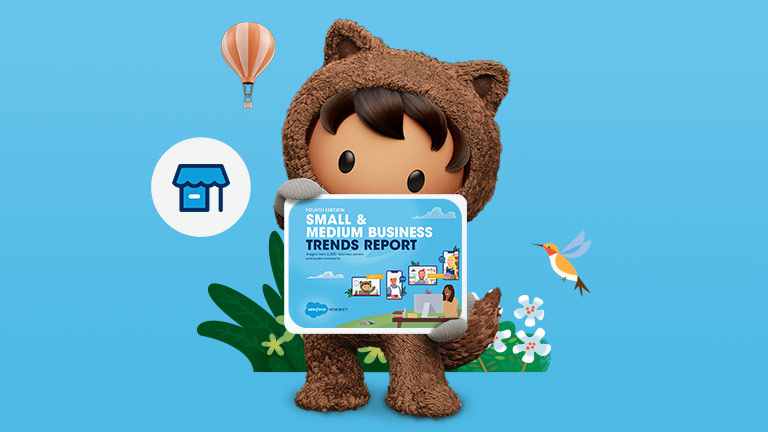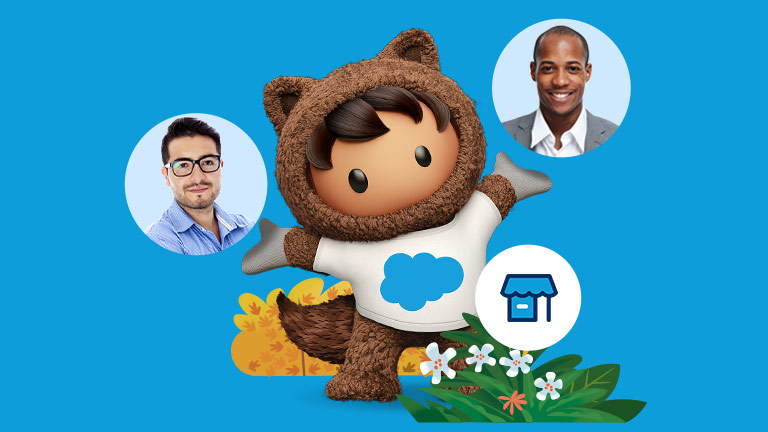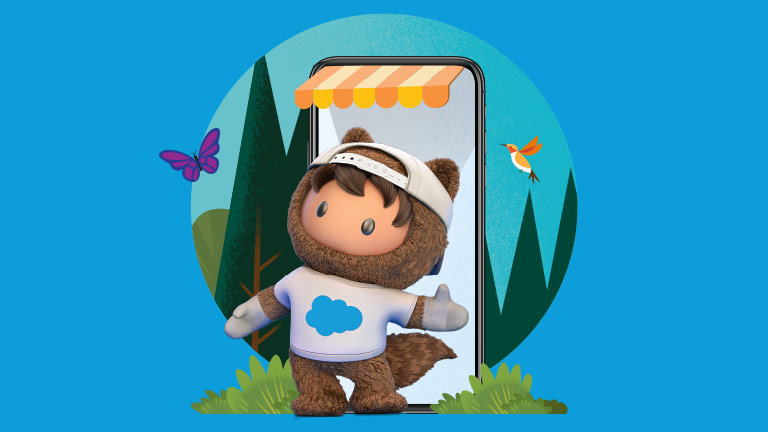What are customer needs? Answering that question may not always be easy – but it’s crucial for business success. After all, knowing what the customer wants is the starting point for creating winning products and services. Just as importantly, it’s the basis for forming long-lasting relationships.
The State of the Connected Customer report reveals that 62% of customers expect businesses to anticipate their needs, and 73% expect companies to understand their unique needs and expectations. If your business isn’t proactively working towards understanding its customer and addressing their concerns, it risks falling behind competitors that are.
Let’s take a look at how you can determine the needs of your customer – then go about satisfying them.
What are customer needs?
Put simply, customer needs are the factors that influence the purchasing decisions of consumers and B2B buyers. By anticipating and meeting customer needs, brands can create offerings that better connect with the consumer and buyer, while increasing profitability and driving long-term loyalty.
The three types of customer needs
There are many factors that might influence purchasing behaviour, from the simple and common to the complex and highly personal, but most fall into one of three types.
Practical. Customer needs are most often driven by practical considerations. These can include everything from price and availability to ease-of-use and functionality. If you’re offering a high-quality, low-cost product or service that’s easy to obtain or access, you’re catering towards practical customer needs. Customers driven by practical needs are likely to choose an offering that will simply help them perform a function or achieve a goal. This was once particularly true of B2B buyers, whose longer buying journey includes input from multiple stakeholders. But in a world where products and services often share similar price points, availability and functionality, B2B buyers are increasingly being influenced by emotional and social factors - whether they know it or not.
Emotional. What a customer wants can often be just as powerful a driver of purchases as what a customer needs. In other words, they may be driven by how an offering makes them feel. For example, they may choose a product that evokes pleasant memories from childhood. Or they may look for a product that makes them feel more confident or powerful. While a practical customer may choose a fuel-efficient compact car, an emotional one may splurge on a motorcycle. Consumers have always been influenced by emotional and social factors, but these factors are increasingly influencing B2B buyers as well. Harvard Business School professor Gerard Zaltman posits that 95% of cognitive decision-making happens subconsciously. This means that even buyers who think they’re being pragmatic are often responding to factors outside the rational. And this means that B2B organisations should focus on creating emotional bonds with buyers - not just winning over the procurement team.
Social. Some customers make purchases that are socially driven. For example, they may choose sustainable or ethical brands that reflect their lifestyle. Or they may opt for luxury products that are in-line with their social circle to “keep up with the Joneses”. Socially driven needs are often considered to be the hardest to predict, but entire businesses have sprung up around tracking new trainer drops or tech releases. B2B buyers are also paying attention to socio-political factors in their purchasing decisions, as they need to justify partnerships to stakeholders. As such, they’re looking at their vendors’ CSR (corporate social responsibility), treatment of employees, environmental impact and community involvement in ways they never did before.
Eight ways for identifying the needs of your customers
When it comes to addressing customer needs, a one-size-fits-all approach won’t work. For instance, you’ll want to tailor your messaging to prioritise the distinct concerns of different audiences.
But how can you gain key insights into your customers, so that you can not only meet their needs, but exceed their expectations? Here are 8 strategies for getting started.
Follow your data. We’re living in the age of the digital imperative. You likely already have a wealth of information about your customers at your disposal, especially if you’re centralising your data in a CRM. Take a deep dive into your business’s data and see what’s connecting with customers, what can be improved, and what new opportunities can be identified from it.
Talk to your customers. The best way to know what your customers want is to simply ask them. Deploying post-purchase surveys will help you evaluate your customer experience. You can also reach out to loyal customers for opinions on products and services. They may have some great ideas for improvements and new offerings.
Raise your social media game. Try to engage with your customers in the places where they spend their most time. For many, that’s social media. Listen in on what people are saying about your business. Are you seeing recurring concerns? Can you use this information to drive improvements? Are you using your brand’s social media presence to showcase your voice and build more personal relationships?
Gather feedback from your teams. Your sales and service teams speak to your customers frequently. Gather your reps and discuss what they’ve been hearing from customers. Do your teams have suggestions for new products or services? Do they have ideas for how you can improve the customer experience?
Form a focus group. Forming a focus group isn’t for every business. After all, it can be costly. Moreover, these groups will not have the same in-depth knowledge of your offerings as your customer base will. But if you’re looking to move into new markets, a focus group can put you on the right path.
See what people are searching for. One of the most cost-effective ways to see what customers need is to see what they’re searching for. You can use tools like Google Keyword Planner to gain insights into customer behaviour. You can see how many times phrases and keywords have been searched each month, so you can see what’s trending up. Or you could use Google Trends to see more specific data, with searches being further segmented.
Learn from your competitors. Your competitors are helping to define your marketplace, so it’s important to keep up with any new products or services they’re offering. Look for ways you can use this market intelligence to improve your offerings or create new ones. You’ll also want to pay attention to their messaging. How are they positioning themselves? After all, they’re trying to reach the same customers you are.
Use Artificial Intelligence. Artificial intelligence is one of the most customer-centric technologies that SMES can use. Not only can AI tools analyse data to identify unique needs and preferences; they can help SMEs create tailored customer journeys. AI can also increase efficiency, improve service and create more customer-centric marketing campaigns.
You understand the needs of your customer – what’s next?
Now that you know the needs of your customers, you can build a blueprint for meeting them.
Some of the steps towards building a customer-centric strategy include:
Get regular feedback from your customers. Talking to your customers isn’t a one-time thing - it should be done regularly. Establish a feedback loop where you can constantly evaluate the products and services you’re offering, and the market’s response to them. This regular monitoring of consumer needs will help you respond quickly to market shifts and emerging customer concerns.
Perfect your brand’s messaging. You’ll want to create different messaging for different audience segments, considering their specific needs and the channels through which they shop. Make sure that your marketing is aligned with customer needs and that your communications highlight the most relevant benefits of your products and services.
Brainstorm new products and services. Knowing what your customers value and prioritise when making a purchase will help you create innovative offerings that not only address their needs, but stand out from the crowd. Look at the results from your focus research. Is there a gap between what customers need and what’s available?
Create the need. Some businesses have an “if you build it, they will come” approach. Instead of researching and responding to the existing needs of their customers, they create a new need in their customers. For example, it’s unlikely that socially conscious Millennials are wishing there was a credit card made just for them, but if you offer a card that donates to charities, provides rewards based on purchases from sustainable businesses, and sponsors community building, you may create that customer need.
Level up your loyalty programme. Look at your business’s loyalty programme. Is it centred around the needs of your customers? Is it offering value at the right places? Loyalty programmes are a powerful tool for building relationships, so ensure that your programme is working as hard as it could be.
Re-evaluate your customer service KPIs. Quick and convenient should always be the priority when it comes to customer service. But once that frictionless service is in place, can you add further value to the customer experience? Look at your service KPIs (Key Performance Indicators) and see if they can be supplemented to not only measure successful resolutions, but how well you’re meeting the ongoing needs of your customers. In other words, turn your service into a relationship-building machine.
Ready to follow customer needs to exciting new places?
By following the needs of your customer, you can ensure that you’re always putting them first. And by designing your business around offering solutions, you’ll be well on your way to winning trust and increasing customer retention.
To see more about how customer-centricity can help build relationships – and how digital tools can help – check out our CRM Handbook.






